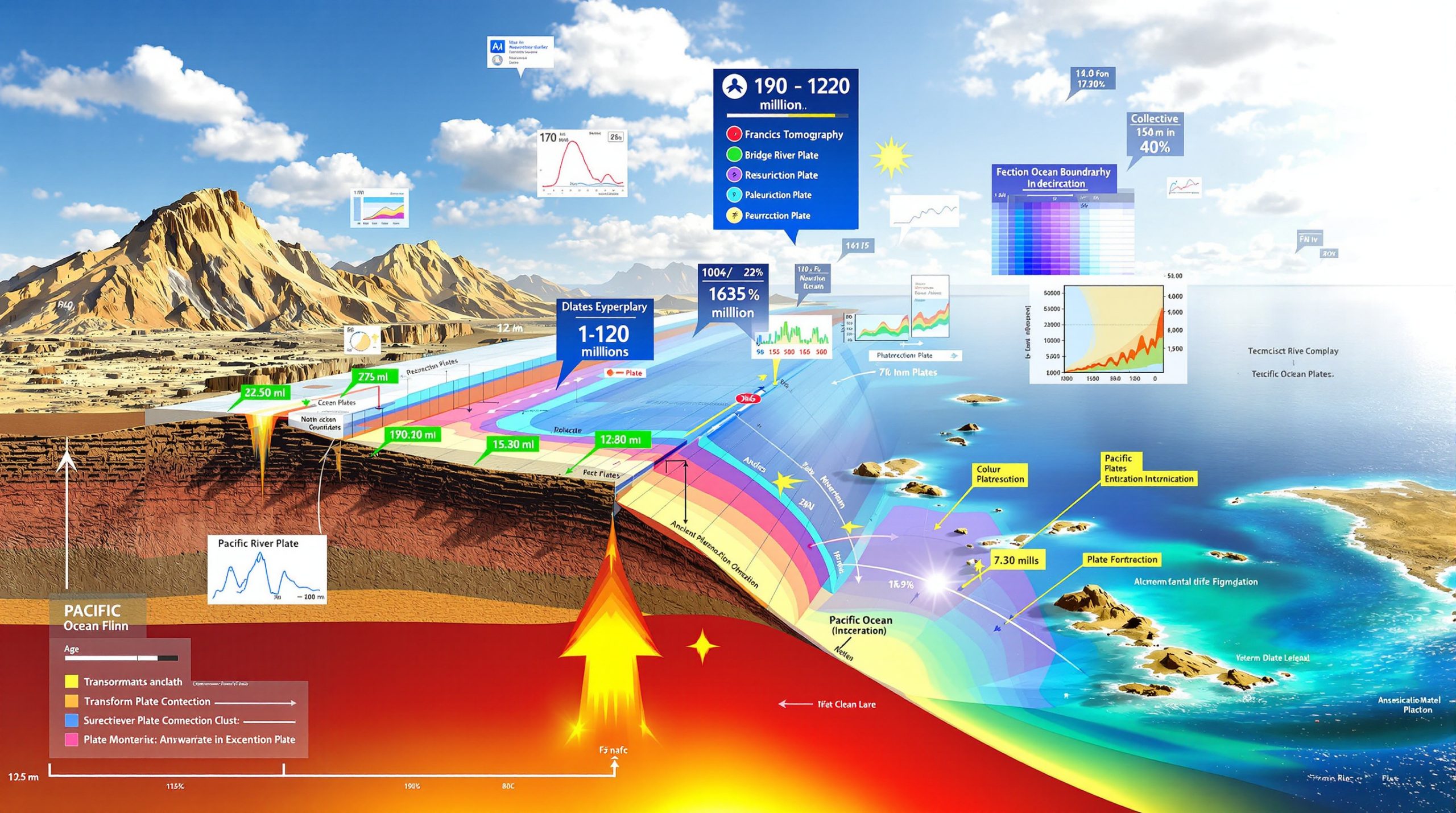Libya's Strategic Oil Discovery Reshapes North African Energy Landscape
Libya announces new onshore oil discovery that could significantly alter the country's hydrocarbon production capacity and strengthen its position in global energy markets. This development represents more than a routine exploration success, as it demonstrates Libya's continued geological potential despite ongoing political complexities that have historically constrained the nation's energy sector growth.
The discovery occurs amid renewed international interest in African upstream opportunities, with major energy companies increasingly viewing North African resources as strategic alternatives to traditional supply sources. Libya's proven reserves of approximately 48.4 billion barrels already rank as Africa's largest oil endowment, and additional discoveries reinforce the country's long-term production potential.
Technical Characteristics and Production Potential
The newly identified onshore field demonstrates promising initial flow characteristics during preliminary testing phases. Located within Libya's established sedimentary basins, the discovery benefits from proximity to existing pipeline infrastructure and export facilities, potentially reducing development timelines compared to offshore alternatives or greenfield locations requiring extensive infrastructure construction.
Key Development Advantages:
- Strategic positioning within proven hydrocarbon-bearing geological formations
- Access to established pipeline networks connecting to Mediterranean export terminals
- Proximity to existing processing and storage facilities
- High-quality crude oil characteristics suitable for international refining markets
Libya's geological framework, particularly the Sirte Basin and surrounding formations, continues yielding commercially viable discoveries across multiple exploration cycles. These Cretaceous and Tertiary clastic and carbonate sequences have demonstrated consistent hydrocarbon-bearing characteristics, providing technical justification for sustained exploration investment despite political uncertainties.
Regional Context and Comparative Analysis
This discovery contributes to broader African exploration success stories emerging across the continent. Recent hydrocarbon developments in Senegal, Namibia, and Mozambique highlight Africa's expanding role in global energy supply diversification strategies, particularly as European markets seek alternatives to traditional sources.
Notable African Developments:
| Country | Project | Target Production | Timeline |
|---|---|---|---|
| Senegal | Greater SNE | 100,000+ bpd | 2026 |
| Namibia | Venus/Mopane | 50,000-100,000 bpd | 2030-2032 |
| Mauritania | Chinguetti Phase 2 | ~50,000 bpd | 2025-2026 |
| Libya | New Discovery | Under assessment | 2026-2027 |
Libya's discovery occurs alongside significant regional activity, including Algeria's Sonatrach resuming exploration activities in Libyan Block 96/2 after an 11-year hiatus. This development signals growing confidence in North African geological prospectivity and improved operational conditions for international energy companies.
Furthermore, recent discoveries across North Africa, including another discovery made in Libya, demonstrate the region's continued exploration potential. Additionally, the Libya National Oil Corporation's announcements have highlighted the strategic importance of these developments for the country's energy sector.
International Investment Dynamics
Major international energy companies have demonstrated cautious but increasing interest in Libyan upstream opportunities. Current operators including ENI, ConocoPhillips, and Woodside Energy maintain production activities despite political complexities, suggesting that geological rewards justify operational challenges.
Current Production Contributors:
- ENI: Approximately 20,000 bpd from Libyan operations (2024)
- ConocoPhillips: ~30,000+ bpd maintaining upstream presence
- Various IOCs: Continued exploration and development activities
The risk-reward calculation for Libya has evolved significantly as international investors increasingly view political risks as manageable relative to geological prospectivity. Several factors support this assessment: proven geology reduces exploration risk, established infrastructure minimises operational uncertainty, and competitive fiscal terms provide attractive returns compared to other African plays.
Production Trajectory and Infrastructure Requirements
Libya's current crude oil production averages approximately 1.0-1.2 million barrels per day, representing substantial recovery from the 2011-2019 disruption period when output fell to 100,000-400,000 bpd. However, the country's production remains influenced by OPEC production impact and broader market dynamics.
Export Infrastructure Capacity:
| Terminal | Current Capacity | Operational Status |
|---|---|---|
| Es Sider | 220,000 bpd | Partially operational |
| Ras Lanuf | 120,000 bpd | Operational |
| Zueitina | 100,000 bpd | Operational |
| Total | ~440,000 bpd | Variable utilisation |
Libya maintains approximately 4,700 kilometres of oil pipeline infrastructure connecting production fields to export terminals, representing significant sunk capital that reduces development costs for new discoveries. This existing network provides competitive advantages over offshore developments requiring subsea infrastructure and floating production systems.
Political Framework and Operational Resilience
Libya's hydrocarbon sector operates within a dual-administration system featuring the internationally recognised Government of National Unity based in Tripoli and competing authorities aligned with eastern Libya. Despite governance complexities, the National Oil Corporation has maintained operational continuity through decentralised field management and international partnership frameworks.
Institutional Adaptations:
- Maintained ~60% of peak production capacity despite political challenges
- Preserved technical expertise through retained operational staff
- Demonstrated supply resilience with periodic but manageable disruptions
- Continued IOC engagement through flexible operational arrangements
Recent production stability improvements contrast sharply with the 2011-2020 period when civil conflict reduced output from 1.7 million bpd to as low as 100,000 bpd. Current levels averaging 1.0-1.2 million bpd suggest institutional frameworks can support sustained operations despite political uncertainties.
European Energy Security Implications
Libya's strategic Mediterranean location provides European refineries with geographic advantages including short transit distances of 400-500 kilometres to southern European ports and reduced shipping risk compared to Middle Eastern or West African sources. Historical export patterns show 40-50% of Libyan crude reaches European refineries, supporting regional energy security objectives.
European Import Context:
- North Africa (Algeria, Libya): ~600,000-700,000 bpd to Europe
- Russian flows (declining): ~500,000 bpd
- West Africa: ~400,000 bpd
- Middle East: ~900,000 bpd
The European Union's strategic diversification away from Russian energy sources enhances Libya's importance as a reliable supplier. The REPowerEU Plan emphasises reducing Russian energy dependence by 2025-2027, creating opportunities for increased North African imports including Libyan crude.
Market Impact and Price Dynamics
Individual discoveries rarely move global oil prices significantly, but Libya's expanding production capacity contributes to broader supply outlook considerations. The country's ability to activate additional production within 30-60 days provides supply flexibility during market disruptions elsewhere.
Global Market Factors:
- Supply Timeline: Gradual production increases over 2-3 years
- Demand Growth: Global consumption patterns and economic activity
- Geopolitical Premiums: Political stability trajectory in Libya and region
- OPEC+ coordination: Production quota implications and market management
Consequently, Libya's membership in OPEC provides a framework for coordinating production increases with global market conditions, ensuring orderly supply additions that support price stability. This coordination becomes increasingly important considering the potential for oil price stagnation amid various market pressures.
Furthermore, the discovery's impact must be viewed alongside broader global market trends and the US oil production decline that could create space for additional Libyan output.
Investment Opportunities and Capital Requirements
The discovery creates multiple investment opportunities across the energy value chain, from upstream development and midstream infrastructure to service sector growth and local economic development programmes. Field development typically requires 18-36 months from discovery to commercial production, depending on infrastructure requirements and regulatory processes.
Investment Categories:
- Upstream Development: Field development and production equipment installation
- Midstream Infrastructure: Pipeline expansion and processing facility upgrades
- Service Sector: Technical services, logistics support, and specialised equipment
- Local Development: Employment creation and skills training programmes
Comparable African upstream projects require $2-5 billion in capital investment for major field developments targeting 50,000-150,000 bpd incremental production. Libya's existing infrastructure provides cost advantages, though exact investment requirements depend on field-specific characteristics and development scope. Additionally, these developments carry broader investment market implications that investors must consider.
Environmental and Sustainability Considerations
Modern oil development in Libya incorporates comprehensive environmental protection measures aligned with international standards. These include detailed impact assessments, mitigation strategies, and monitoring programmes designed to minimise ecological disruption while supporting local community development.
Libya increasingly emphasises sustainable development principles in hydrocarbon projects, balancing economic benefits with environmental stewardship. This approach includes community benefit programmes, local employment initiatives, and technology transfer opportunities that support broader socioeconomic development objectives.
Long-term Economic Implications
Oil discoveries like this support Libya's broader economic stabilisation efforts by providing enhanced government revenue streams, foreign currency earnings, and employment creation opportunities. The energy sector remains central to Libya's fiscal framework, with hydrocarbon revenues funding essential government services and infrastructure development.
Economic Benefits:
- Increased government revenue through production sharing agreements
- Foreign currency earnings supporting import capacity
- Technology transfer fostering local technical capabilities
- Regional development catalysts supporting community growth
- Export diversification reducing economic vulnerability
The discovery reinforces Libya's position as a significant hydrocarbon producer capable of contributing meaningfully to global energy supply. With appropriate political stabilisation and continued international investment, Libya's energy sector can support sustained economic recovery and development.
Future Development Prospects
Commercial production from new discoveries typically commences within 18-36 months after announcement, subject to development complexity, infrastructure availability, and regulatory approval processes. Libya's established regulatory framework and existing infrastructure provide advantages in accelerating development timelines compared to frontier exploration areas.
In addition, the discovery demonstrates Libya's continued geological potential and supports arguments for sustained exploration investment. Combined with improving political stability and international operator confidence, new hydrocarbon finds position Libya for potential production growth over the medium term.
Development Timeline Factors:
- Regulatory approval and environmental impact assessment completion
- Infrastructure development and pipeline connection requirements
- Security situation stability and operational risk management
- International partnership agreements and financing arrangements
- Technical workforce availability and local capacity building
Libya announces new onshore oil discovery at a time when the country's energy sector faces both opportunities and challenges. As Libya seeks to maximise hydrocarbon potential while navigating political complexities, this discovery adds to the country's substantial resource base and reinforces its strategic importance in global energy markets, particularly for European supply security and African energy development.
Seeking Oil and Gas Investment Opportunities?
Discovery Alert delivers instant notifications on significant ASX mineral and energy discoveries, powered by its proprietary Discovery IQ model to help investors identify actionable opportunities in the resources sector. Begin your 30-day free trial today through Discovery Alert's dedicated discoveries page and position yourself ahead of the market for the next major breakthrough.




